Author: Cade Jobe
It is well established that the quality of the water used to make beer has a marked perceptible impact, and one area of focus for brewers intent on producing the best pint is mash pH. In addition to facilitating the enzymatic conversion of starches into fermentable sugars, ensuring the pH of the mash is within the ideal range is also believed to improve flavor stability and shelf-life. One of the most common products modern brewers use to lower mash pH is lactic acid, which is inexpensive, easy to use, and very effective. However, a more traditional approach involves dosing the mash with a previously soured wort known as sauergut.
While maltsters have begun producing and selling shelf-stable sauergut, it can also be made by the brewer in a process that involves using a lactobacillus culture to sour low gravity unhopped wort to below 3.5 pH. A portion of this solution then goes into the mash for pH reduction, at which point fresh wort can be added to the vessel, allowing the brewer to have a continuous supply. One benefit sauergut has over liquid acids is that it’s natural, meaning it abides by the Reinheitsgebot and can be used by German brewing purists without concern.
I’m a nut about the water I used to brew with and have generally relied on liquid lactic acid to reduce mash pH when necessary, though a recent conversation I had with another brewer got me wondering about the impact using the arguably more natural sauergut might have on my beer. Rather than accept the anecdotal reports of others, I designed an xBmt to test it out for myself.
| PURPOSE |
To evaluate the differences between a Kölsch where the mash pH was reduced using sauergut and one where the mash pH was reduced using lactic acid.
| METHODS |
Considering sauergut is of German origin, I went with a simple Kölsch recipe for this xBmt, which I also felt was light enough to allow any differences to shine through.
Lazy Afternoons
Recipe Details
| Batch Size | Boil Time | IBU | SRM | Est. OG | Est. FG | ABV |
|---|---|---|---|---|---|---|
| 5.5 gal | 60 min | 22.5 | 3.2 SRM | 1.046 | 1.01 | 4.73 % |
| Actuals | 1.046 | 1.01 | 4.73 % | |||
Fermentables
| Name | Amount | % |
|---|---|---|
| Pilsner | 9.75 lbs | 95.12 |
| Wheat Malt | 8 oz | 4.88 |
Hops
| Name | Amount | Time | Use | Form | Alpha % |
|---|---|---|---|---|---|
| Tettnang | 40 g | 60 min | Boil | Pellet | 3.9 |
| Tettnang | 30 g | 5 min | Boil | Pellet | 3.9 |
Miscs
| Name | Amount | Time | Use | Type |
|---|---|---|---|---|
| Lactic Acid | 9.5 ml | 0 min | Mash | Water Agent |
| Weyermann Sour Wort | 180 ml | 0 min | Mash | Water Agent |
Yeast
| Name | Lab | Attenuation | Temperature |
|---|---|---|---|
| Dieter (G03) | Imperial Yeast | 77% | 32°F - 32°F |
Notes
| Water Profile: Ca 48 | Mg 17 | Na 14 | Cl 16 | SO4 12 |
Download
| Download this recipe's BeerXML file |
I started my brew day by collecting the full volume of water for each batch before setting my Bräu Supply controllers to heat them up.
After adding the salts to their respective batches, I weighed out and milled identical sets of grain.
As the mash water was heating up, I measured out 180 mL of sauergut and 9.5 mL of 88% lactic acid, the amounts of each that would achieve the same mash pH.
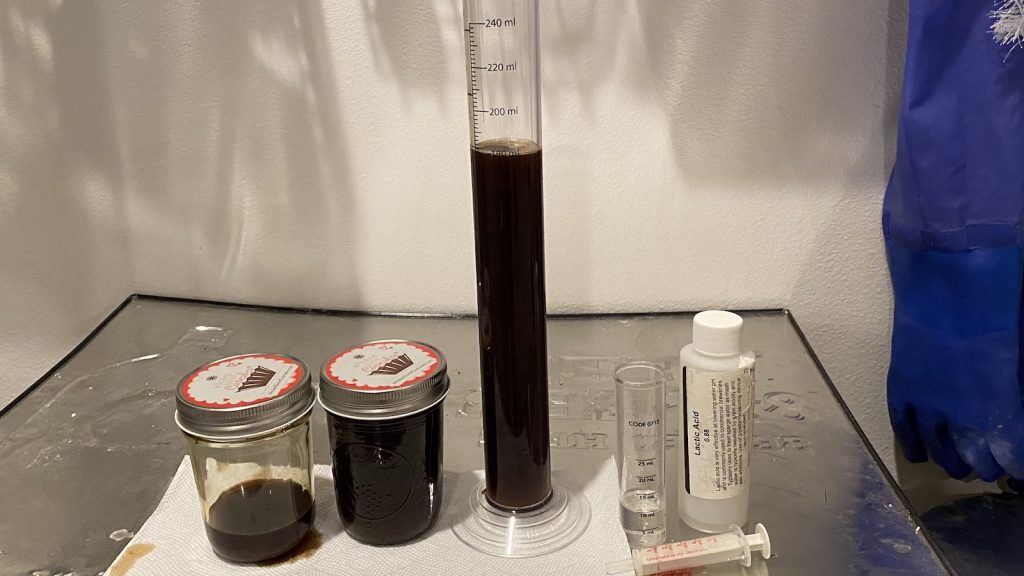
With the water properly heated, I added the grains, turned the pumps on to recirculate, and set the controllers to maintain my intended mash temperature of 152°F/67°C.
At 15 minutes into each mash, I took measurements showing both were at the same pH.
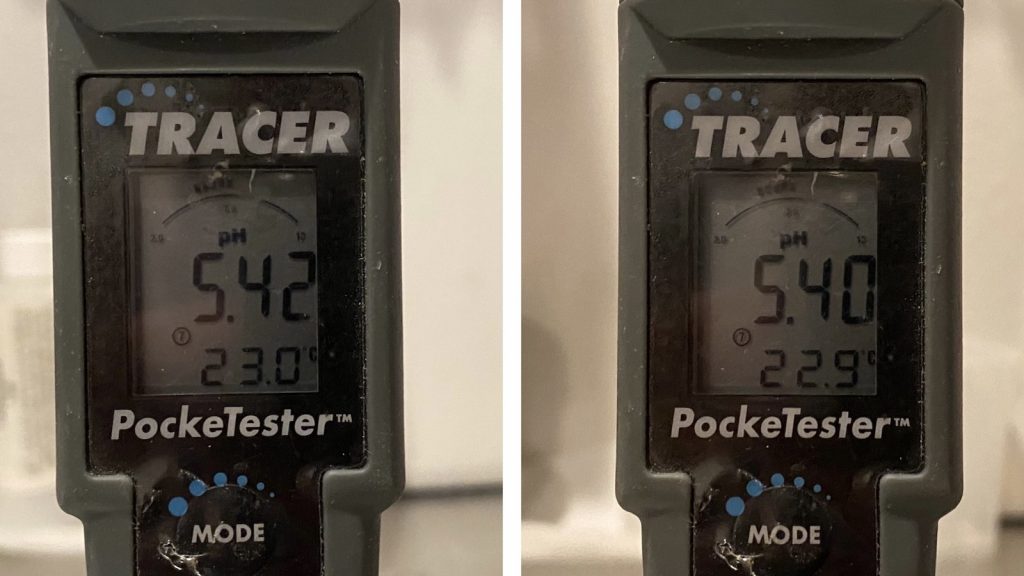
While the mashes were resting, I weighed out the kettle hop additions.
Following each 60 minute mash rest, I removed the grains then boiled the worts for 60 minutes, adding hops at the times listed in the recipe.
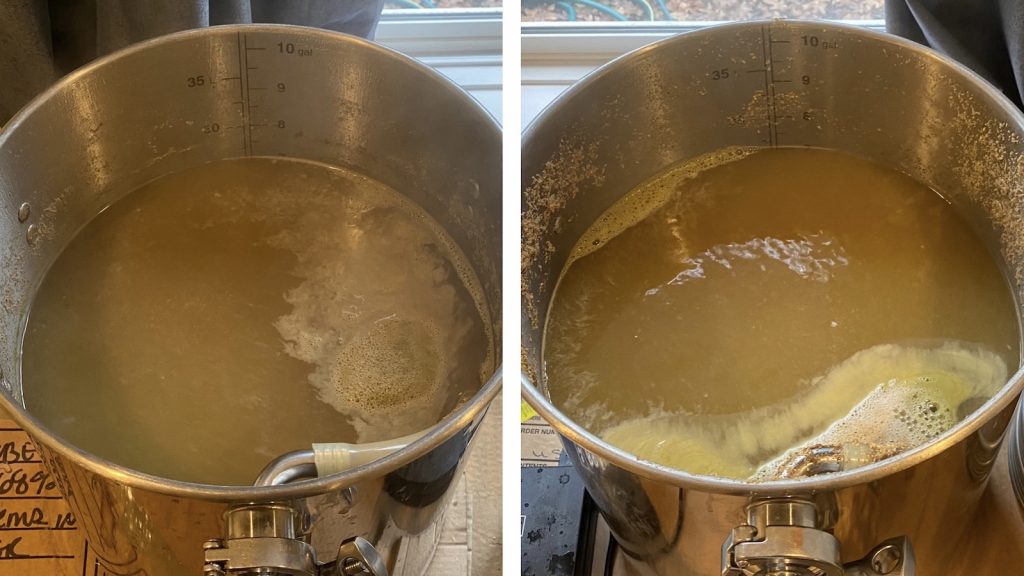
When the boils were complete, I quickly chilled the wort then took hydrometer measurements showing one dosed with sauergut was 0.001 SG higher than the one dosed with lactic acid.
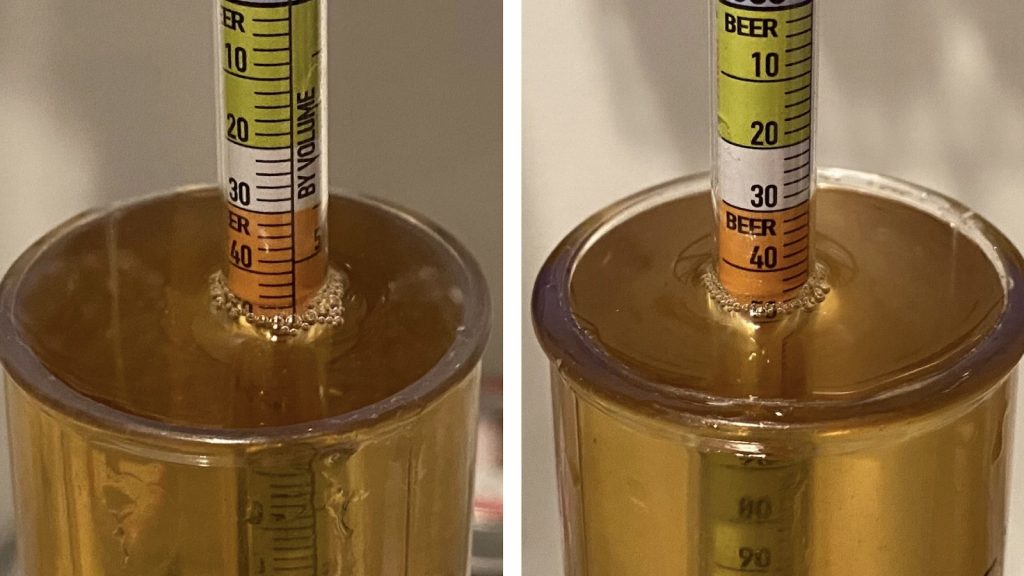
After transferring the worts to sanitized Brew Buckets, they were placed next to each other in my fermentation chamber and I pitched a single pouch of Imperial Yeast G03 Dieter into each.
The beers were left to ferment at 54°F/12°C for 3 days before I raised the temperature to 64˚F/18˚C. With signs of activity absent 5 days later, I took hydrometer measurements showing the sauergut beer finished 0.002 SG points higher than the lactic acid beer.
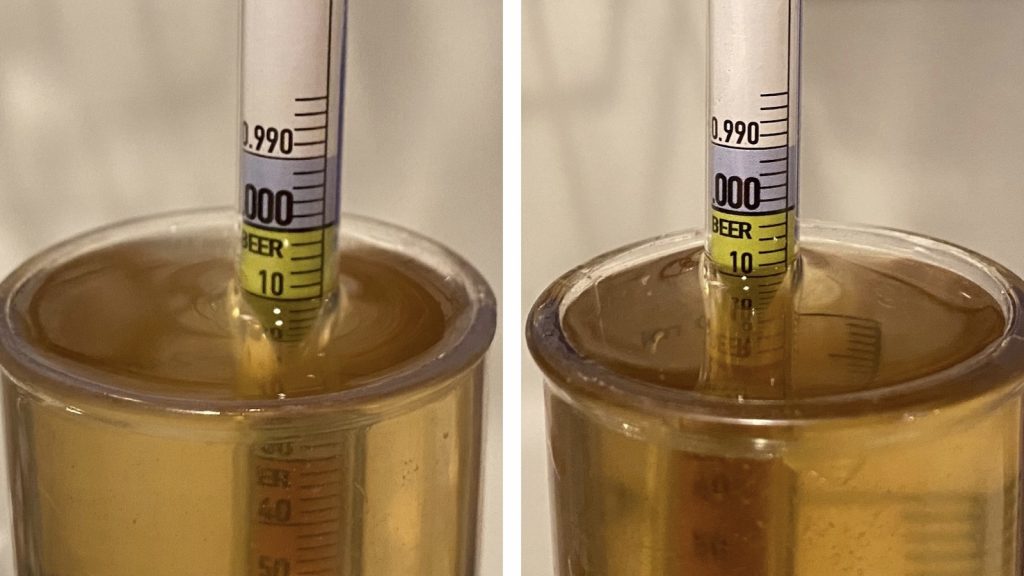
At this point, the beers were pressure transferred to CO2 purged kegs.
The kegs were placed in my keezer and burst carbonated overnight before I reduced the gas to serving pressure. After a couple weeks of conditioning, they were ready for evaluation.
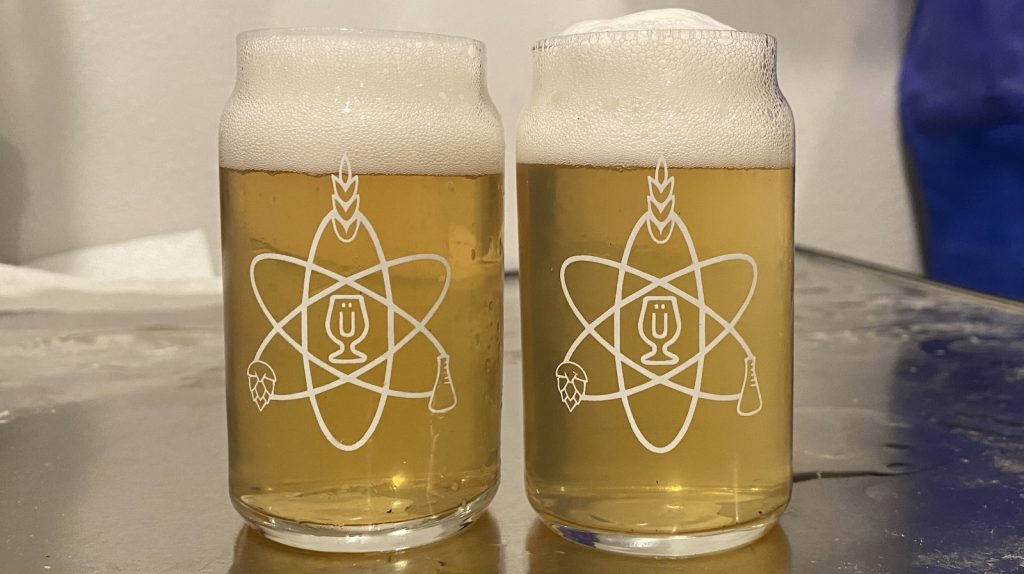
| RESULTS |
A total of 21 people of varying levels of experience participated in this xBmt. Each participant was served 2 samples of the beer made with sauergut and 1 sample of the beer made with lactic acid in different colored opaque cups then asked to identify the unique sample. At this sample size, 12 tasters (p<0.05) would have had to identify the unique sample in order to reach statistical significance, which is exactly the number that did (p=0.021), indicating participants were able to reliably distinguish a beer where sauergut was used to adjust mash pH from one where lactic acid was used instead.
The 12 participants who made the accurate selection on the triangle test were instructed to complete a brief preference survey comparing only the beers that were different. A total of 4 tasters reported preferring the sauergut beer while 8 said they liked the one made with lactic acid more.
My Impressions: Out of 5 semi-blind triangle attempts, I identified the odd-beer-out 4 times, which is consistent enough to suggest I perceived a real difference between the samples. To my palate, the beer made with sauergut had a slightly cleaner, fresher, and more crisp taste. While both were solid examples of Kölsch, I definitely preferred the one made with sauergut!
| DISCUSSION |
It’s widely accepted that a mash pH that falls between 5.2 and 5.6 leads to a number of benefits including improved enzymatic activity as well as flavor stability. When the pH of the mash is too high, brewers can use a variety of acidic substances to bring it down, one of the most common being lactic acid, which is produced in a lab and sold in liquid form. A more natural alternative that some believe lends a desirable quality to beer is sauergut, which is essentially acidic wort that gets added to the mash. The fact tasters in this xBmt were able to reliably distinguish a Kölsch where the mash pH was adjusted with sauergut from one where lactic acid was used instead supports the notion that each product lends a perceptibly unique characteristic to beer.
Objectively, the sauergut beer started with a slightly higher OG and finished a couple points higher as well, though the difference was ultimately low enough that it’s unlikely this had a meaningful impact on the quality of the beers. While generally viewed as being flavor neutral, particularly considering how little is used for mash pH adjustment, some have reported detecting a buttery aroma in their lactic acid. I didn’t personally pick that up in my lactic acid, but the sauergut unsurprisingly had a much more pleasant aroma.
We’ve done a few past xBmts comparing different methods of mash acidification, and while they haven’t all returned significant results, I’ve still tended to make the proper adjustments using lactic acid. Seeing as I’ve been pleased with the beers I make and never felt any had off-flavors some associate with lactic acid, I hadn’t considered using anything else, especially sauergut, which is difficult to source and requires some work to make at home. That is until a conversation I had with friend and fellow brewer, Jordan Folks, who happened to have some commercial sauergut he offered to share with me for this xBmt. Based on my personal experience with these beers, I absolutely look forward to using sauergut more in the future! There’s no denying how similar these beers were, which is evident in the fact I chose the wrong sample in one of my own triangle tests, but I had a definite preference for the clean, crisp flavors I got from the one made with sauergut.
If you have any thoughts about this xBmt, please do not hesitate to share in the comments section below!
Support Brülosophy In Style!
All designs are available in various colors and sizes on Amazon!
Follow Brülosophy on:
FACEBOOK | TWITTER | INSTAGRAM
If you enjoy this stuff and feel compelled to support Brulosophy.com, please check out the Support page for details on how you can very easily do so. Thanks!


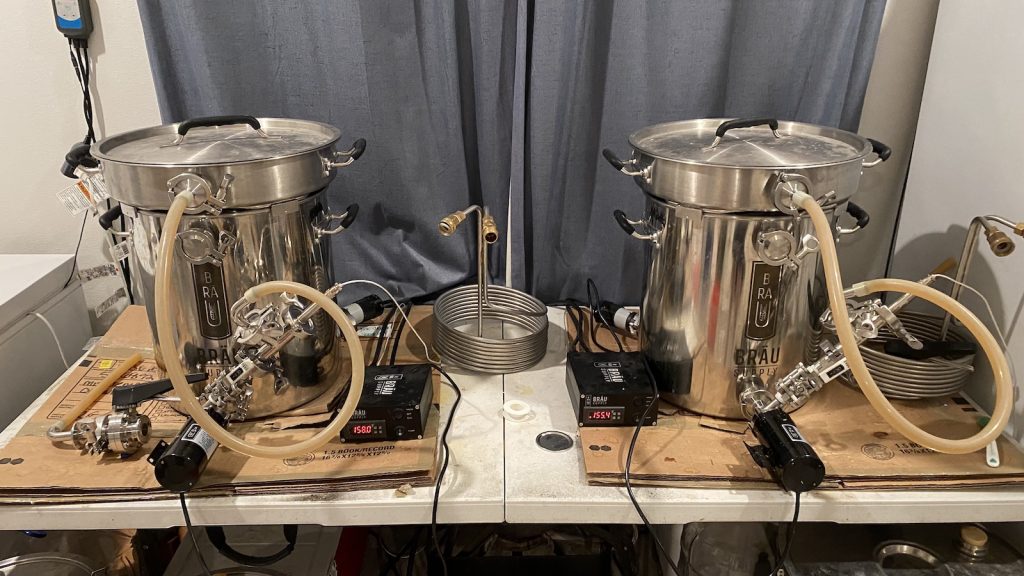
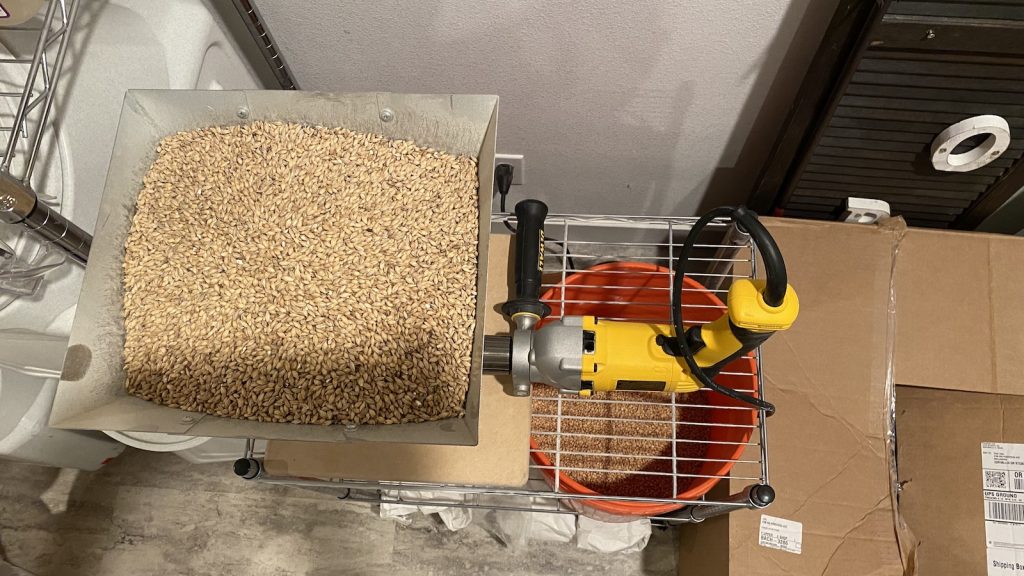
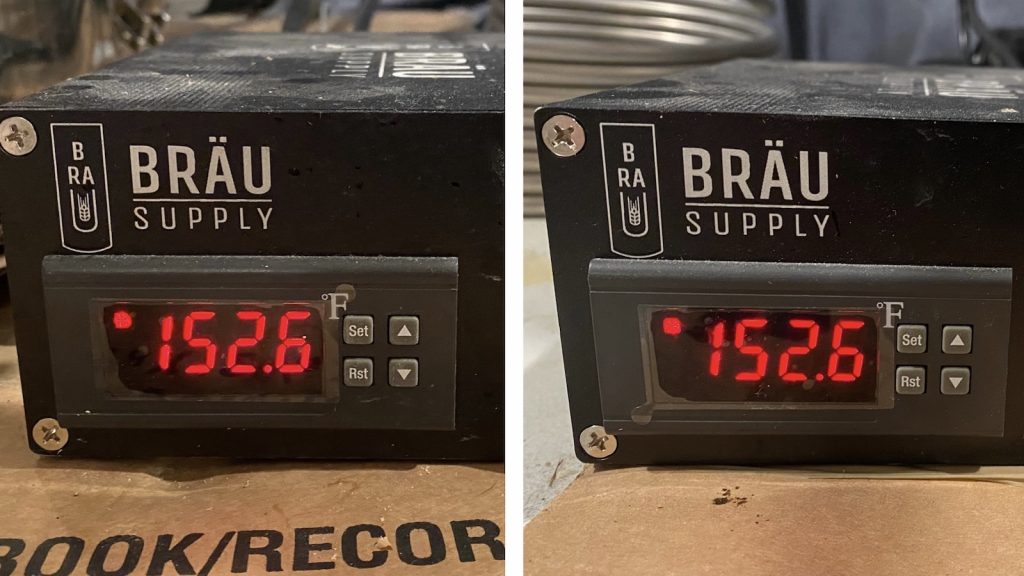
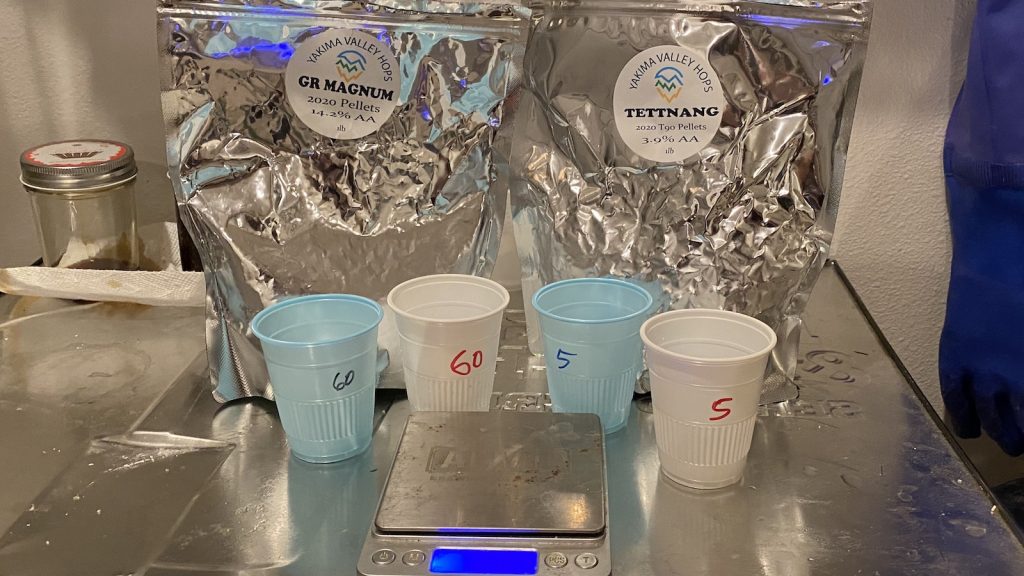
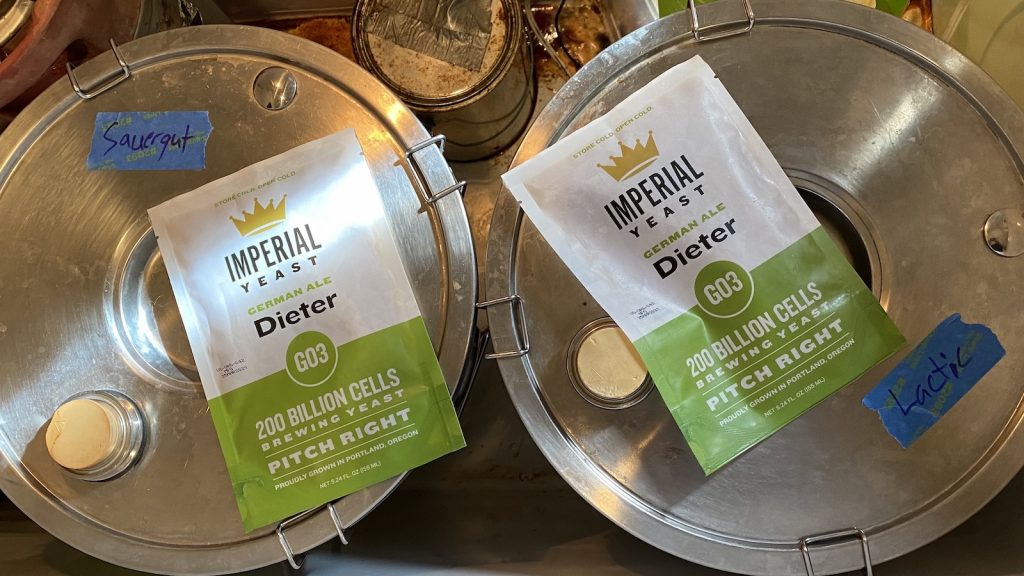
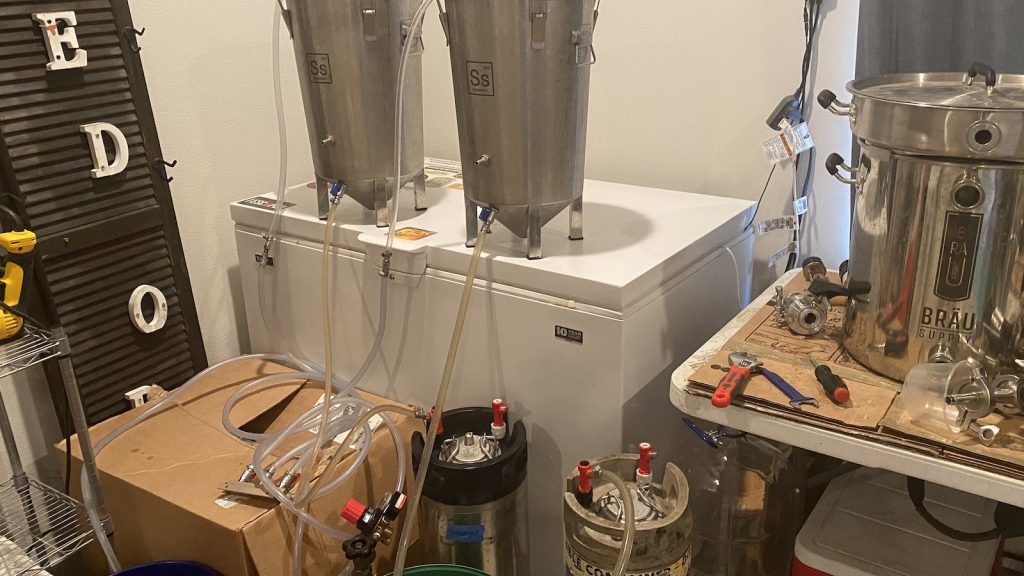






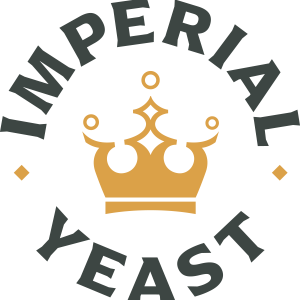




10 thoughts on “exBEERiment | Water Chemistry: Sauergut vs. Lactic Acid For Mash pH Adjustment In A Kölsch”
Interesting. how did you determine how much sauergut to add to bring the mash pH down to the desired level?
Weyermann’s sauergut is ~5.5% lactic acid, so I used that number in Brewfather’s water calculator as a lactic acid addition.
Good write up. But sauergut isn’t necessarily “more natural” than lactic acid. Industrially, the latter is generally made via fermentation. Sure it’s done in a large scale reactor but that’s just as natural is your brewing process. I don’t mean to nitpick but appeal to nature is pretty much my favorite logical fallacy. If one wants to follow historic practices in brewing, no issue there. It’s a brewing choice like any other.
Did you measure the pH of the served beers?
Were they the same?
Is it possible that a difference in pH is what was perceived? such that a bit more or less sourgut might have made the two identical in pH and in taste?
I did not measure the pH of the served beers. It’s possible that the difference in pH was a bit more or less with the sauergut, but they were so close during the mash 5.40 vs 5.42. It’s surprising that there was such a noticeable flavor difference. Maybe the sauergut triggered something in the boil? pH is a really interesting suggestion because “crispness” was a difference that I detected. Subtle pH changes could certainly impact finish.
9.5mL of lactic acid seems like a lot to me. Is this owing to high pH source water or the recipe?
It’s due to the high buffering capacity of my well water. Highly alkaline, so it requires more acid to bring it to a suitable pH.
https://www.themodernbrewhouse.com/a-sauergut-reactor/
Talked about this in 2016…..
Germans talked about it years ago, too. Let’s all stop talking about everything that was talked about before, great logic.
Where did you source your sour wort from? No one seems to sell it